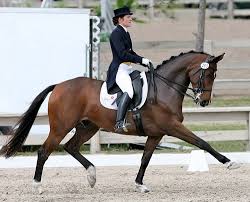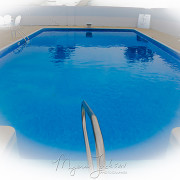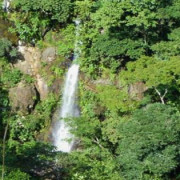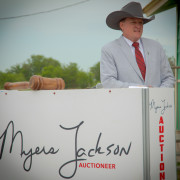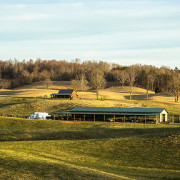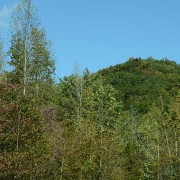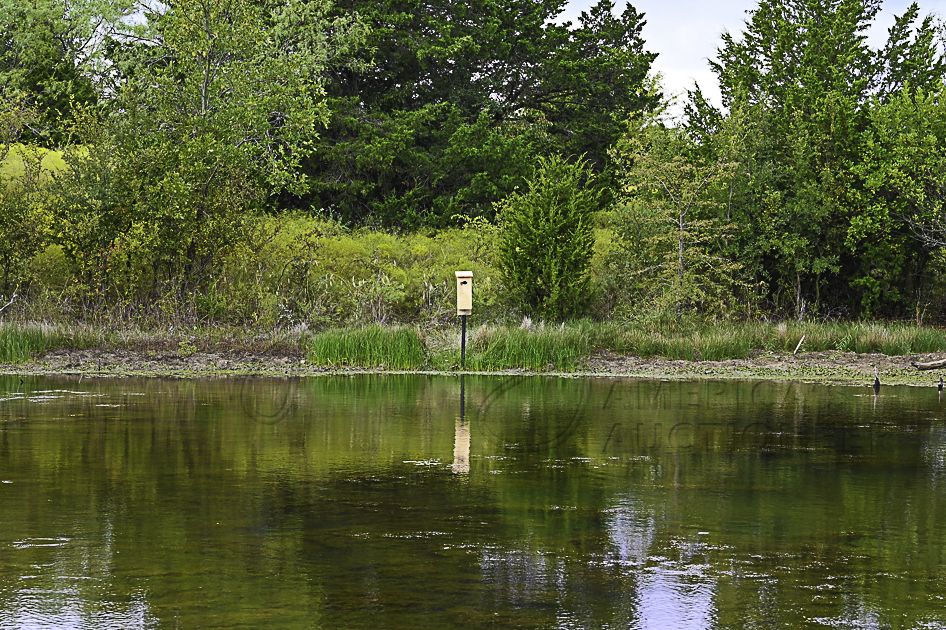What is Dressage? Dressage Daily Can Help
What is Dressage? Dressage Daily Can Help
What is Dressage? Dressage Daily can help you find out more about this subject. Dressage is a competitive equestrian sport, defined by the International Equestrian Federation as the “highest expression of horse training,” where horses and riders are expected to perform from memory a series of predetermined movements. These types of competitions are held and ridden in by amateurs and professionals that can be seen participating in events such as the World Equestrian Games. The fundamental purpose of dressage is developing standardized progressive training methods. This type of training takes a horse’s natural athletic ability and develops the horse into the best riding horse that particular horse is capable of becoming. The goal of dressage is to create a horse that will respond smoothly to the rider using minimal aids. A dressage rider should be relaxed and the movements requested of the horse should appear to be effortless. Another term used for dressage is “Horse Ballet.”
 To adequately understand the sport, it is necessary to understand the origin. Dressage runs deep throughout ancient Europe and was also recognized as a sport during the Renaissance period. Little has changed since this sequential training system for horses was developed. This is now referred to as Classical Dressage.
To adequately understand the sport, it is necessary to understand the origin. Dressage runs deep throughout ancient Europe and was also recognized as a sport during the Renaissance period. Little has changed since this sequential training system for horses was developed. This is now referred to as Classical Dressage.
In today’s dressage competitions, horses and riders train at different levels and demonstrate a sequence of movements. Judges evaluate these movements and riders are tested to make new levels. The scale ranges from zero to ten, zero being considered “not executed” and ten being “excellent.” A six being sixty percent overall is considered acceptable to move on to the next level.
Dressage principles are recognized to be beneficial to all horses regardless of breed or discipline. However, the warm blood category is most seen at high levels of competition. Dressage is done is in two different sized arenas: the small arena size is 66 x 131 feet and the standard size arena is 66 x 197 feet. In the small arena, letters are used on the outside of the arena to mark the starting point or entry and move clockwise. For the small arena these letters are A-K-E-H-C-M-B-F. The letters D-X-G also mark the center of the arena, X being the utmost center. The standard size arena letters are A-K-V-E-S-H-C-M-R-B-P-F. The letters in the middle of the arena are D-L-X-I-G with X marking the centerline. This type of dressage arena also has a centerline from A to C with X being the middle, as well as two quarter lines halfway between the centerline and the long side of the arena.
This is a very complex sport that takes years to understand completely and a lifetime to master. The following movements are the ones riders aspire to achieve and require an extreme amount of development from horse and rider. Movements included in Grand Prix dressage tests are:
Piaffe
A calm, composed, elevated trot in place (although minimal movement forward is allowed and not penalized in competitions as it is the natural way of performing the movement).
Passage
A very collected trot, in which the horse has great elevation of stride and seems to pause between putting down its feet (it has a great amount of suspension in the stride). Described very well like a horse “trotting under water,” it takes great strength and training to get a good passage. Ideally in both the piaffe and the passage, the tempo should be exactly the same as in trot.
Collected Gaits (Trot and Canter)
A shortening of stride in which the horse brings its hindquarters more so underneath himself and carries more weight on his hind end. The tempo does not change; the horse simply shortens and elevates his stride.
Extended Gaits
Usually done at the trot and canter, the horse lengthens its stride to the maximum length through great forward thrust and reach. Grand Prix horses show amazing trot extensions. Though not as visually impressive, equally important is the extended walk, which shows that the horse can easily relax and stretch in the midst of the more collected movements.
Flying Changes In Sequence
Informally called “tempi” at this level, the horse changes leads at the canter every stride (one tempi or “onesies”), two strides (two tempi), or three strides (three tempi).
Pirouette
A 360 or 180 (depending on the level) degree turn in place, usually performed at the canter. In a Freestyle to music (kür) test, a turn of up to 720 degrees is permissible for Grand Prix.
Half Pass
A movement where the horse goes diagonal, moving sideways and forward at the same time, while bent slightly in the direction of movement.
Below are the principles of dressage from The United States Pony Club Manual of Horsemanship:
PRINCIPLES OF DRESSAGE
Dressage is based on classical principles and methods that have been proven over several centuries. These principles, in brief, are as follows:
Dressage employs natural gaits and movements of the horse (instead of artificial “tricks”). One goal of dressage is to produce under saddle the most beautiful movements the horse is capable of when free.
Dressage training is progressive; each stage is based on the foundation of previous work. Dressage emphasizes the development of qualities such as balance and suppleness, rather than performing artificial movements.
The purpose of dressage training is the gymnastic development of the horse, developing strength, suppleness, balance, and good movement, based on an understanding of horse anatomy, movement, and biomechanics. Good dressage makes a horse’s gaits more beautiful and pleasant to ride, and make him stronger, sounder, and prolongs his useful life.
The goals of dressage are harmony, unity, and cooperation between horse and rider, without the use of force. The rider’s aids should be so subtle as to be nearly invisible; the horse gives the impression of doing of his own accord what the rider asks.
A balanced, supple, and independent seat, which permits correct and subtle application of the aids, is essential for dressage training at any level.
This is a broad overview of a beautiful and complex equestrian sport that continues to grow throughout the world. Beautiful and intrinsic, the above movements take great skill of rider and horse.
Thanks for reading the article, “What is Dressage? Dressage Daily Can Help You Find Out More.” A good resource for more information about dressage is Dressage Daily.
For more information on how to buy or sell horse properties online log on to www.Acre.bid or call the Auctioneers at 844-400-AUCTION, that’s 844-400-2828.
This post, “What is Dressage? Dressage Daily Can Help You Find Out More” is sponsored by:

